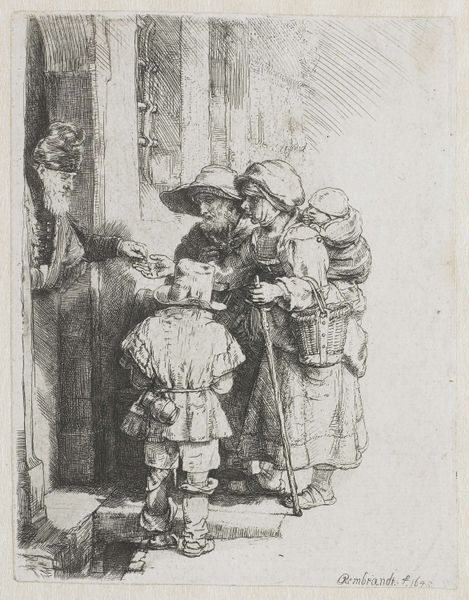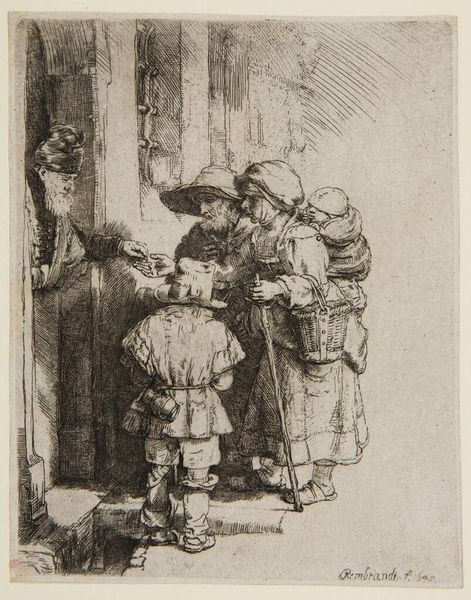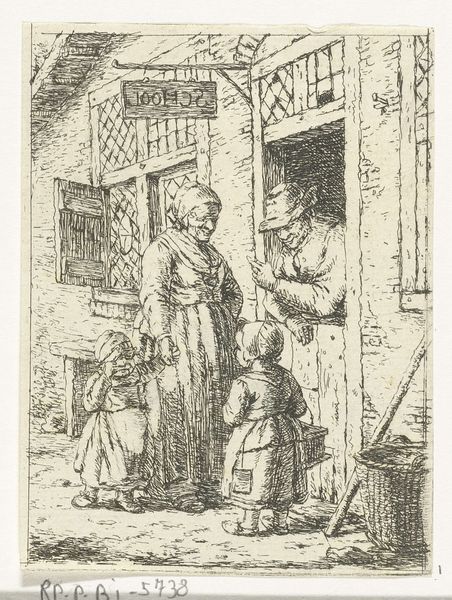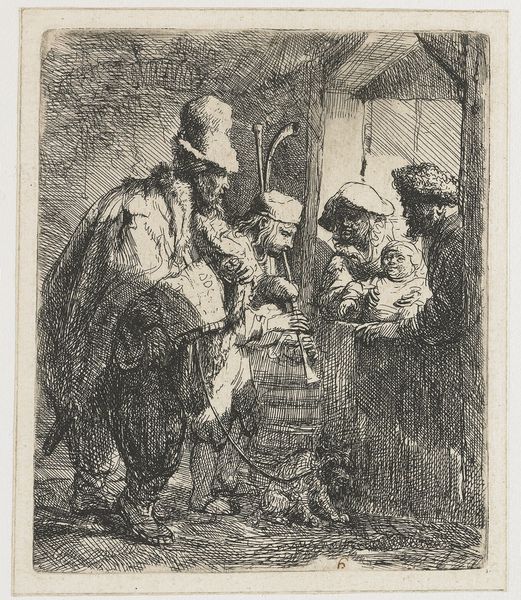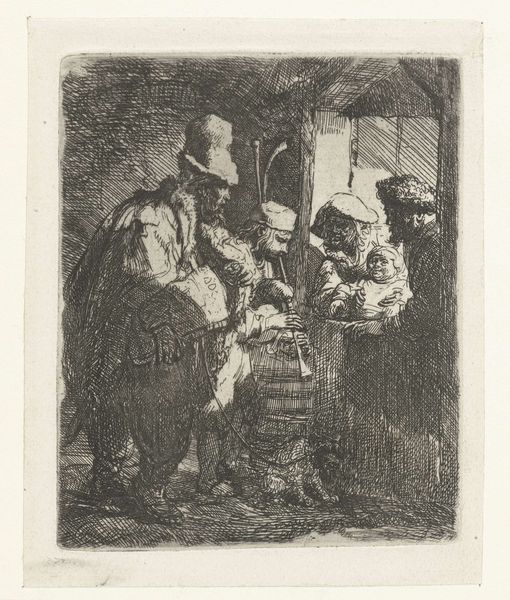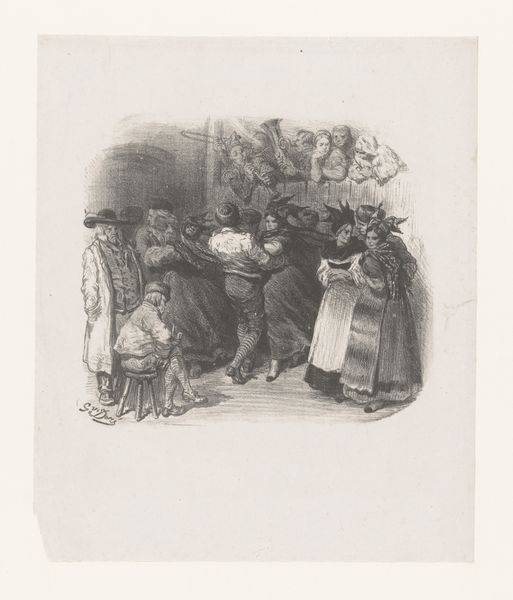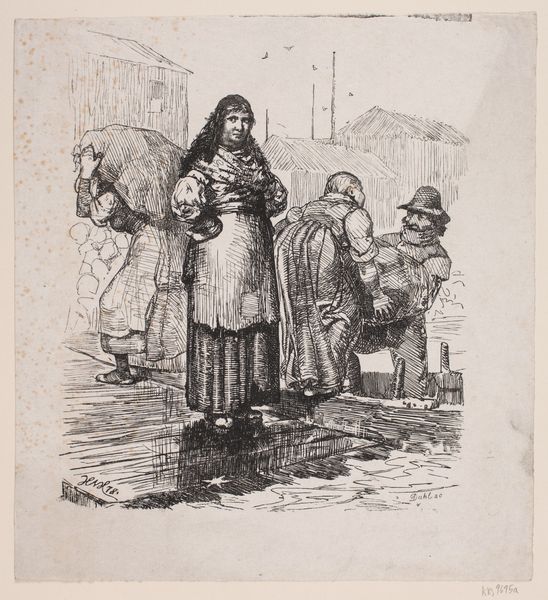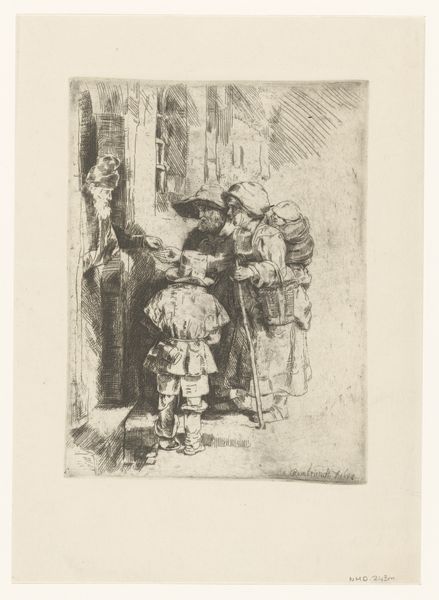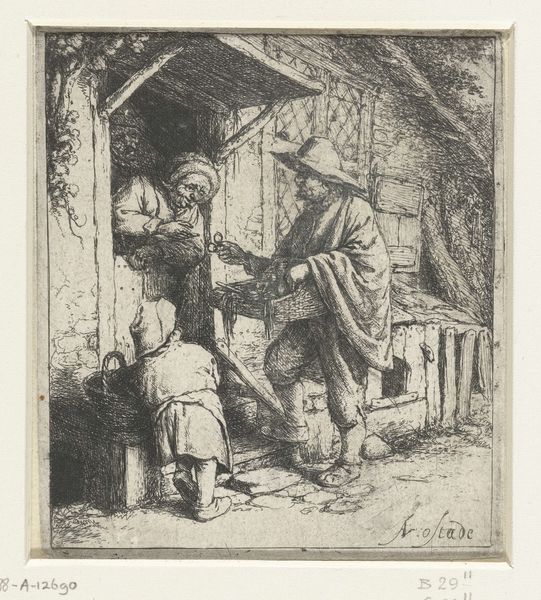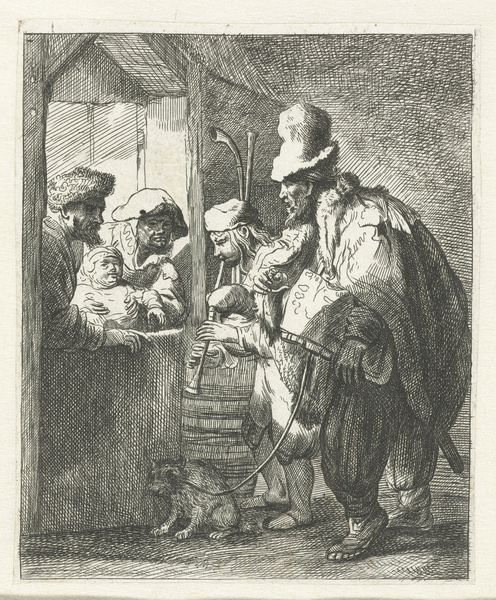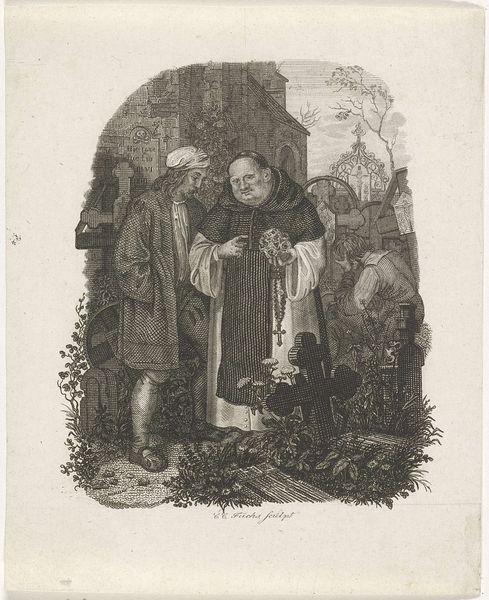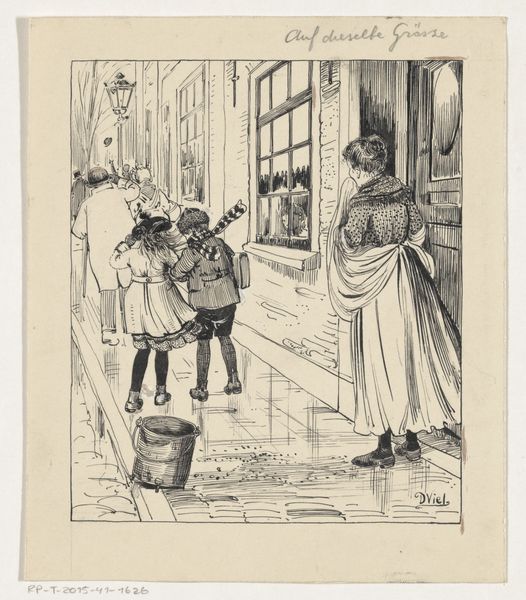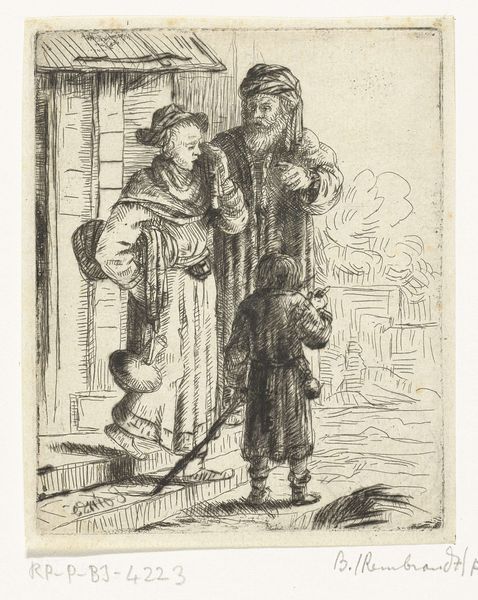
Dimensions: height 163 mm, width 128 mm
Copyright: Rijks Museum: Open Domain
Curator: Rembrandt van Rijn's etching, "A Blind Hurdy-Gurdy Player and Family Receiving Alms," dates from between 1648 and 1906 and is now housed at the Rijksmuseum. The composition feels heavy, weighted down by hardship. The family, shrouded in shadow, presses forward. Is that weariness I detect? Editor: Yes, and beyond weariness, I see resilience etched into the lines of their faces. Note how Rembrandt used the etching technique here; it's not just about representing a scene, it's about conveying texture. Consider the coarse garments of the family, juxtaposed with the finer clothing of the almsgiver. Curator: Precisely. The economic disparity is palpable through the meticulous rendering of fabrics. This connects directly to Rembrandt's position within the Dutch Golden Age; his works are commodities as much as they are artistic expressions. The production of etchings like this enabled a wider audience to engage with art. Editor: I'm also struck by the layered symbolism. The hurdy-gurdy, traditionally associated with itinerant musicians and often the poor, becomes a potent symbol of vulnerability and dependence. The figure giving alms – what does that gesture of charity signify? Curator: We need to analyze that figure through the lens of the materials depicted. His darker garments and heavier build might point to affluence. His generosity underscores his position and is materialized by those actual coins exchanged. Rembrandt emphasizes not just social commentary, but the physical act of giving and receiving. It’s very tangible. Editor: But beyond material analysis, look at the architecture itself. That darkened doorway is not only literally an entrance or a stage. Isn't it suggestive of uncertainty and reliance on something, or someone, outside themselves for comfort and hope? Rembrandt has rendered these potent allegorical ideas, using these familiar tropes to elicit feeling from his audience. Curator: So we see both a socio-economic situation presented and a collection of iconographies intended to inspire an empathetic reading, both intertwined because Rembrandt, as the producer, both comments upon his present day whilst considering art history's role to move viewers to moral reckoning. I am interested to study the watermarks of other etchings of this era now. Editor: I leave today pondering what other untold visual narratives await those willing to really look at familiar imagery.
Comments
No comments
Be the first to comment and join the conversation on the ultimate creative platform.
